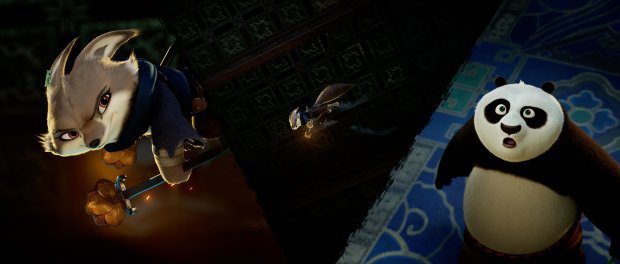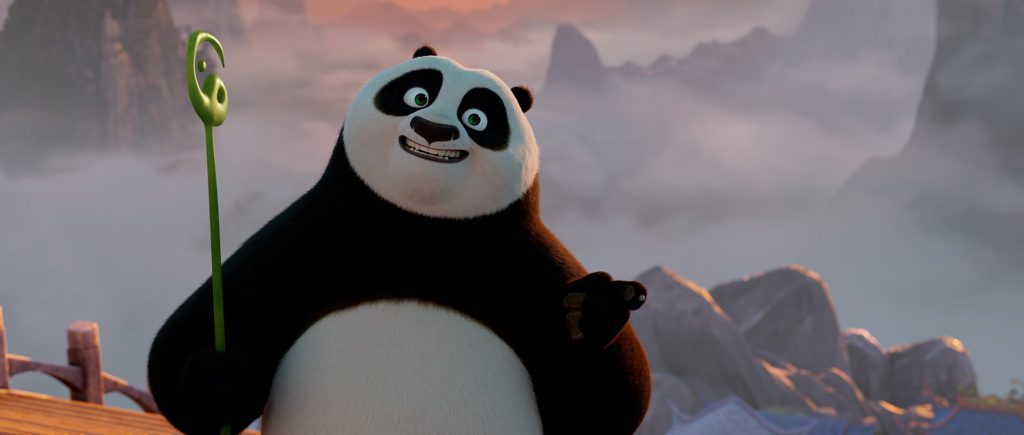“Kung Fu Panda 4” falls within the okay to fairly good range, meaning it's decent enough to attract several million families to theaters this month. The movie targets babysitters with easy access to concessions, positioning itself as the current choice among others.
Still, the question remains: What did the 2008 “Kung Fu Panda” accomplish that “Panda 4” only manages occasionally?
The first movie in any animated series has an advantage in introducing new characters and concepts. The initial “Kung Fu Panda” relied on martial arts action and the comedic improbability of an affable panda like Po, voiced by Jack Black, rising as the Dragon Warrior, defender of all that is good in ancient China. The film blended authentic comic creativity with imaginative variations on live-action martial arts films featuring Bruce Lee, Jackie Chan, and others. genuine comic invention with clever variants on live-action martial arts movies a la Bruce Lee and Jackie Chan and many others.
Eight years have passed since “Panda 3.” In “Panda 4,” screenwriters Jonathan Aibel and Glenn Berger return, collaborating with co-writer Darren Lemke and co-directors Mike Mitchell and Stephanie Stine. Stine, making her feature directorial debut, brings her experience as art director from “Raya and the Last Dragon” and a “How to Train Your Dragon” sequel.
In franchise sequels, such as Iron Man or Kung Fu Panda, a celebrity's ego often becomes a major plot point. In “Panda 4,” Po is enjoying his fame and fortune, but is told he must appoint the next Dragon Warrior and transition into a quieter role he does not desire.
The staff has the power to access the spirit realm, home to the late kung fu masters, including the formidable snow leopard Tai Lung. The new film's antagonist, The Chameleon, has become the top underworld figure, extorting a piece of almost everything. She is a mob boss of supreme deception, changing her appearance at will and seeking the Staff of Wisdom for her own nefarious purposes.

This unfolds as a series of constant near-death situations for Po and his new ally, the streetwise fox Zhen. The movie rarely slows down, and while the first “Panda” sequels were leaning toward that, the original's rhythmic variety and verbal flair seem quite distant now.
Many people prefer the animated babysitters to be like this, with rarely a pause or a slowdown. I laughed four or five times, once for each of the credited writers, including the additional material writers. For example, the joke about Po's meditation mantra changing to "dinner, please" when spoken by Jack Black sounds just right. There's also a delightful bull-in-a-china-shop sight gag, executed with a wry delicacy that is absent from most of the rest of the movie.
Maybe the decrease in quality is because of its lower production budget; this one cost about half of what the other three “Pandas” cost. But maybe not. Maybe the pandemic has influenced the screenwriters regarding what they believe audiences want, and need, and how to handle it. “Panda 4” feels more like one of the “Ice Age” movies, filled with occasionally funny but constantly nattering snark and meanness, so that you don’t really believe the sincere parts. Black, Awkwafina, and Hoffman do their jobs, but the jokes have a way of arriving and sounding like jokes, but not quite jokes. being This is primarily an action movie, which is okay.
Or rather, it's okay to fairly good.
“Kung Fu Panda 4” — 2.5 stars (out of 4)
MPA rating: PG (for martial arts action/mild violence, scary images and some mild rude humor)
Running time: 1:34
How to watch: Premieres in theaters March 7









